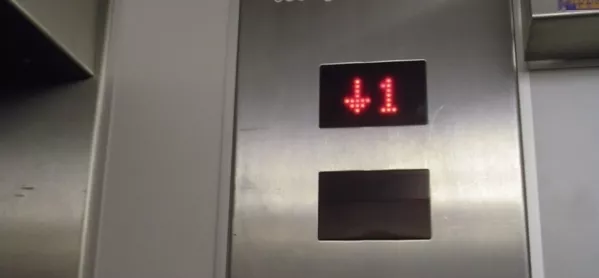The number of secondary schools falling below the government’s floor standard has increased, today’s school league tables show.
A total of 365 schools were below the 2017 secondary floor standard, representing 12 per cent of state-funded mainstream schools. This compares to 9.3 per cent of schools (282) below the floor standard in 2016.
The news came alongside more disappointing figures for the government, with the proportion of pupils entering in the English Baccalaureate (EBacc) achievement measure down from 36.8 to 35 per cent and the proportion achieving it dropping from 23.1 to 21.9 per cent.
However disadvantaged, FSM and EAL students, as well as pupils with SEND, all bucked downward trend in Ebacc entry.
In October, schools minister Nick Gibb admitted that schools had been put under too much pressure to reach floor standards. “I do think sometimes, we as policymakers sometimes put too much pressure on headteachers and teachers to get over a floor standard,” he said then.
“Where those schools fail it is generally because of the curriculum and pedagogy, and I think it is better to have a discussion about those issues than to do more to put increasing football-manager type pressure onto headteachers and schools.
“Of course, you need accountability and you need to have schools publishing their key stage 2 results and their GCSE results, and I think the mere publication of those results is the pressure that will raise standards. My personal view is that is where the pressure should rest.”
Today’s figures highlight a variation between regions in England. London has the lowest proportion of schools below the floor, with 6.9 per cent, and North East the highest, with 20.9 per cent
Schools are below the floor standard if its Progress 8 score is below -0.5 and the upper band of the 95% confidence interval is below zero
The floor standards exclude closed schools, including those which closed during 2016-17 and re-opened as a different type of school, for example, a sponsored academy.
However, today’s figures say there were 89 closed schools in 2017 that would otherwise have been included in the floor standard, and 39 of these would have been below the floor.
In a commentary, the DfE blamed a number of factors for the increase in schools below the floor standard.
It said: “Changes to the point scores allocated to grades in unreformed GCSEs to reflect the introduction of new GCSEs graded 9 to 1 in English and maths is the main reason for the increase. The changes mean the range of possible Attainment 8 scores has increased and there is more spread in Progress 8 scores.”
It also highlighted changes to the way prior attainment is calculated, following the abolition of the key stage 2 writing test in 2012.




